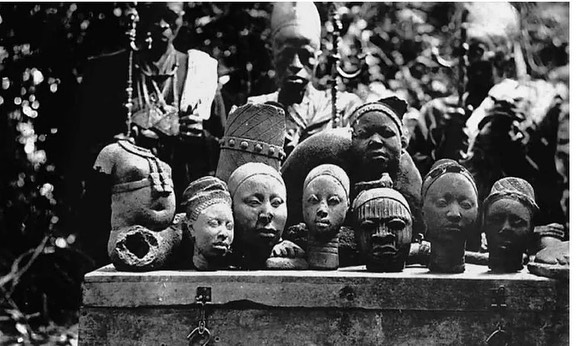Regarded as some of the most advanced works of art in the world at the time. Over time, the true historical account surrounding these outstanding pieces of art has assumed various forms. If the terracotta figures from Ilé Ifè are any indication, civilization there began a very long time ago.
During his 1930 visit to the Iwinrin Groove, Wilfrid D. Hambly, the first curator of African ethnology at the Field Museum of National History in Chicago, was guided along a narrow path to see a scared ceremony and the unveiling of the sacred terracotta.
The sculptures were initially protected from theft at the shrine by being hidden beneath clay pots; later, they were kept in a padlocked box in a specially made mud building in the groove.

The artwork was brought to the Palace in 1934 by HRM, Oba Adesoji Aderemi, the Ooni of Ilé ife, for safekeeping until they could be moved to the National Museum of Ife Antiquities.
Image 1: In Iwinrin Groove in Ilé ifè in 1930, a priest opens a box containing holy terracotta heads.
Image 2: In 1931, terracotta heads were found in Iwinrin Groove at Ile Ife.

